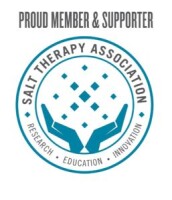About Salt therapy association
Salt Therapy Association: The Ultimate Guide to Dry Salt Therapy
Are you looking for a natural way to improve your respiratory health and overall well-being? Look no further than dry salt therapy, also known as halotherapy. And if you want to learn more about this ancient practice and connect with like-minded individuals, the Salt Therapy Association is here to help.
What is the Salt Therapy Association?
The Salt Therapy Association (STA) is a non-profit organization dedicated to promoting the benefits of dry salt therapy and supporting its practitioners. Founded in 2015, STA has quickly become a leading authority on halotherapy, providing education, certification, networking opportunities, and advocacy for its members.
Why Join the Salt Therapy Association?
Whether you are a seasoned halotherapist or just starting out in this field, there are many reasons why joining STA can benefit you:
1. Education: As a member of STA, you will have access to comprehensive training programs that cover all aspects of dry salt therapy. From basic principles to advanced techniques and research findings, these courses will help you stay up-to-date with the latest developments in this field.
2. Certification: Once you complete your training with STA, you can earn certification as a Certified Halotherapist or Certified Halotherapy Facility through our rigorous testing process. This credential demonstrates your expertise and commitment to excellence in halotherapy.
3. Networking: By joining STA's community of professionals from around the world who share your passion for dry salt therapy, you can expand your knowledge base and build valuable connections that can lead to new business opportunities or collaborations.
4. Advocacy: As an advocate for halotherapy practitioners everywhere, STA works tirelessly on behalf of its members by promoting awareness of this practice among healthcare providers and policymakers alike.
What is Dry Salt Therapy?
Dry salt therapy involves inhaling microscopic particles of pharmaceutical-grade sodium chloride (salt) in an enclosed environment designed specifically for this purpose. These particles penetrate deep into the lungs and respiratory system, where they help to reduce inflammation, clear mucus, and improve oxygenation.
Dry salt therapy has been used for centuries in Eastern Europe as a natural remedy for respiratory ailments such as asthma, bronchitis, and allergies. Today, it is gaining popularity around the world as a complementary therapy for a wide range of conditions including skin disorders, stress-related disorders, and even sports injuries.
How Does Dry Salt Therapy Work?
The science behind dry salt therapy is based on the principles of osmosis and diffusion. When you inhale salt particles into your lungs, they attract water molecules from your body's tissues. This process helps to thin out mucus secretions in the airways and make them easier to expel.
In addition to its effects on the respiratory system, dry salt therapy also has other health benefits. For example:
- It can boost your immune system by stimulating white blood cell production.
- It can improve skin health by reducing inflammation and promoting collagen production.
- It can enhance mental clarity by reducing stress levels and promoting relaxation.
What Are the Different Types of Dry Salt Therapy?
There are several ways to experience dry salt therapy:
1. Salt rooms: These are enclosed spaces that are filled with fine particles of pharmaceutical-grade sodium chloride (salt). You sit or lie down in this room for about 45 minutes while breathing normally. The room is designed to be relaxing with dim lighting or soft music playing in the background.
2. Salt beds: These are similar to massage tables but have a layer of crushed Himalayan rock salt crystals on top instead of foam padding. You lie down on this bed while inhaling microscopic particles of pharmaceutical-grade sodium chloride (salt) through an attached halogenerator machine that disperses it into the air around you.
3. Personal inhalers: These handheld devices allow you to inhale pure pharmaceutical-grade sodium chloride (salt) directly into your lungs wherever you are. They are small and portable, making them ideal for travel or on-the-go use.
Is Dry Salt Therapy Safe?
Dry salt therapy is generally considered safe for most people. However, there are some precautions you should take:
- If you have a respiratory condition such as asthma or COPD, consult with your doctor before trying dry salt therapy.
- If you have open wounds or sores on your skin, avoid direct contact with the salt crystals as they may cause irritation.
- If you experience any discomfort during your session (such as coughing or shortness of breath), stop immediately and notify the staff.
Conclusion
If you're interested in learning more about dry salt therapy and connecting with other practitioners in this field, the Salt Therapy Association is an excellent resource. With its comprehensive training programs, certification options, networking opportunities, and advocacy efforts on behalf of halotherapy practitioners everywhere - STA has everything you need to succeed in this exciting field. So why wait? Contact us today at 844-STA-INFO to learn more!



